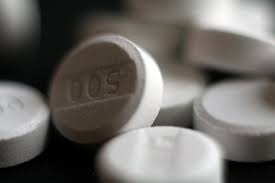January 27th, 2011 by BarbaraFicarraRN in Expert Interviews, Health Tips
No Comments »


Information circulating about the dangers of plastic containers has created fear and confusion. Are plastic containers toxic? Do harmful chemicals leach out into its contents? Do we need to discard all plastic containers?
Recently, I interacted in a live health chat on MedHelp about the safety of plastics. Scientist, Joe Schwarcz, Ph.D., Director of McGill University’s Office for Science and Society, talked about “The Real Truth About Plastics: What You Should And Shouldn’t Worry About.”
While Dr. Schwarcz states that some plastics like those made by Tupperware and Rubbermaid are safe to use, there are other plastics made of Bisphenol A (BPA) that may cause some concern, however he did not become alarmed.
There is extensive information on the safety of plastics, and reading some of it can easily cause panic and confusion, but the smartest step health consumers can do for themselves is to remain calm and don’t become alarmed. Gather the facts and determine what’s best for you.
The Facts About Bisphenol A (BPA)
Bisphenol A (BPA) is used to manufacture polycarbonate plastics. This type of plastic is used to make some types of beverage containers, compact disks, plastic dinnerware, impact-resistant safety equipment, automobile parts, and toys. BPA epoxy resins are used in the protective linings of food cans, in dental sealants, and in other products.
General exposure to BPA at low levels comes from eating food or drinking water stored in containers that have BPA. Small children may be exposed by hand-to-mouth and direct oral (mouth) contact with materials containing BPA. Dental treatment with BPA-containing sealants also results in short-term exposure. In addition, workers who manufacture products that contain BPA can be exposed.
How Does BPA Get Into The Body?
BPA can leach into food from the epoxy resin lining of cans and from consumer products such as polycarbonate tableware, food storage containers, water bottles, and baby bottles. Additional traces of BPA can leach out of these products when they are heated at high temperatures. Read more »
*This blog post was originally published at Health in 30*
January 27th, 2011 by John Di Saia, M.D. in News, Opinion
1 Comment »

 From the Food and Drug Administration (FDA) safety alert yesterday:
From the Food and Drug Administration (FDA) safety alert yesterday:
ISSUE: The FDA announced a possible association between saline and silicone gel-filled breast implants and anaplastic large cell lymphoma (ALCL), a very rare type of cancer. Data reviewed by the FDA suggest that patients with breast implants may have a very small but significant risk of ALCL in the scar capsule adjacent to the implant.
BACKGROUND: In total, the agency is aware of about 60 cases of ALCL in women with breast implants worldwide. This number is difficult to verify because not all cases were published in the scientific literature and some may be duplicate reports. An estimated 5 million to 10 million women worldwide have breast implants. According to the National Cancer Institute, ALCL appears in different parts of the body including the lymph nodes and skin. Each year ALCL is diagnosed in about 1 out of 500,000 women in the United States. ALCL located in breast tissue is found in only about 3 out of every 100 million women nationwide without breast implants.
While the FDA’s new report is interesting, as it stands it’s of little consequence. A mere 60 cases of a unusual breast cancer worldwide is a tiny number compared to the huge number who develop the much more common ductal breast cancers (about one in seven women in the U.S.) Breast implants have not been found to affect this more common cancer incidence. I do expect this statistic to be misquoted by the anti-breast implant factions online.
As an aside, I do remember a case in a fellow plastic surgeon’s mother of a lymphoma near a breast implant capsule when I was a resident. This is the only breast cancer of this type I have ever seen, however, in 14 years of practice. While I don’t doubt the association, I do focus on the significance of this report to the average breast implant patient, which is very little at this point.
– John Di Saia, M.D.
*This blog post was originally published at Truth in Cosmetic Surgery*
January 20th, 2011 by PJSkerrett in Better Health Network, Health Tips
No Comments »

Good news for parents, teachers, pediatricians, and others engaged in the ongoing battle against lice: The Food and Drug Administration (FDA) just approved a new treatment for head lice in children age four and older. Called Natroba, it’s a liquid that is rubbed into the hair and allowed to sit for 10 minutes before being rinsed off. Natroba is a useful addition to the anti-lice arsenal, since some head lice have become resistant to permethrin and pyrethrins, the active ingredients in over-the-counter anti-lice products such as Nix and Rid.
Head lice are tiny insects that go by the big name Pediculus humanus capitis. They thrive in the warm tangle of human hair, feeding off blood in the scalp and breeding with abandon. A female lays eggs called nits that she attaches to strands of hair. Nits hatch after about eight days, become adults in another week or so, feed for awhile, then begin to make more lice.

CDC photo of the stages of the life of a head louse, with a penny for size comparison.
What To Do
First off, here’s what not to do: Don’t shave your or your child’s head, or coat it with petroleum jelly or mayonnaise or anything else designed to “suffocate” the parasite. You’ll probably end up with greasy, smelly, lice-infested hair.
Current guidelines from the American Academy of Pediatrics call for the use of an over-the-counter product containing permethrin or pyrethrins as a first salvo against head lice. Shampoos and rinses made with these substances are generally effective. Most treatments for head lice need to be used twice, seven to 10 days apart, along with combing wet hair with a fine-toothed nit comb. Some lice are resistant to pyrethrin and permethrin. Stronger prescription drugs, such as malathion and lindane, also work but aren’t as safe for humans. That’s where Natroba comes in. Read more »
*This blog post was originally published at Harvard Health Blog*
January 17th, 2011 by Toni Brayer, M.D. in Better Health Network, Opinion
1 Comment »

 Just in time for the new year, the FDA has approved the first low-dose chewable birth control contraceptive.
Just in time for the new year, the FDA has approved the first low-dose chewable birth control contraceptive.
The daily chew will be marketed by Watson Pharmaceuticals, Inc. Fred Wilkinson, executive vice president of Global Brands said: “We believe this product is an important addition to the oral contraceptive category, and that its characteristics will make it a desirable choice for women.”
I have to ask myself: “Why?”
Most birth control failures occur because the woman forgets to take the pill. Will a chewable be more reliant? Is it aimed at gals who just love chewing gum? I don’t get the concept.
Marketing for this breakthrough will begin the in the second quarter of 2011.
*This blog post was originally published at EverythingHealth*
January 14th, 2011 by admin in Health Tips, News, Video
No Comments »
 This is a guest post from Dr. Mary Lynn McPherson.
This is a guest post from Dr. Mary Lynn McPherson.
**********
FDA Restricts Acetaminophen In Popular Pain Medications
The Food and Drug Administration (FDA) made an announcement yesterday that affects one of the most common pain medications on the market, and as a consequence may affect countless numbers of the 75 million Americans who experience chronic pain (for perspective, that’s more than the number of people suffering from cancer, heart disease and diabetes combined.) The FDA has asked manufacturers of popular prescription pain medications like Vicodin or Percocet to limit the amount of acetaminophen (also known as Tylenol, or APAP) used in these drugs to no more than 325 milligrams per tablet — the equivalent of one regular-strength Tylenol tablet.
The move came because research has shown that acetaminophen can cause liver damage when taken in higher than recommended doses. The problem is that many over-the-counter medications ALSO contain acetaminophen, and patients may take one or more of these common products (like Tylenol) to reduce their fever or get rid of a headache along with their prescription pain relievers.
Before you know it, you could be taking more than the maximum daily dose of acetaminophen which is 4,000 milligrams. I go out of my way to advise people I work with of this warning, but not everyone takes time to talk to the pharmacist and not all pharmacists make themselves readily available. That is why it is critically important that you talk to your pharmacist to make sure that you are not taking more than this amount. The pharmacist is the last stop between you and medication misuse — you could be taking a medication that contains acetaminophen and not even know it. Read more »




















